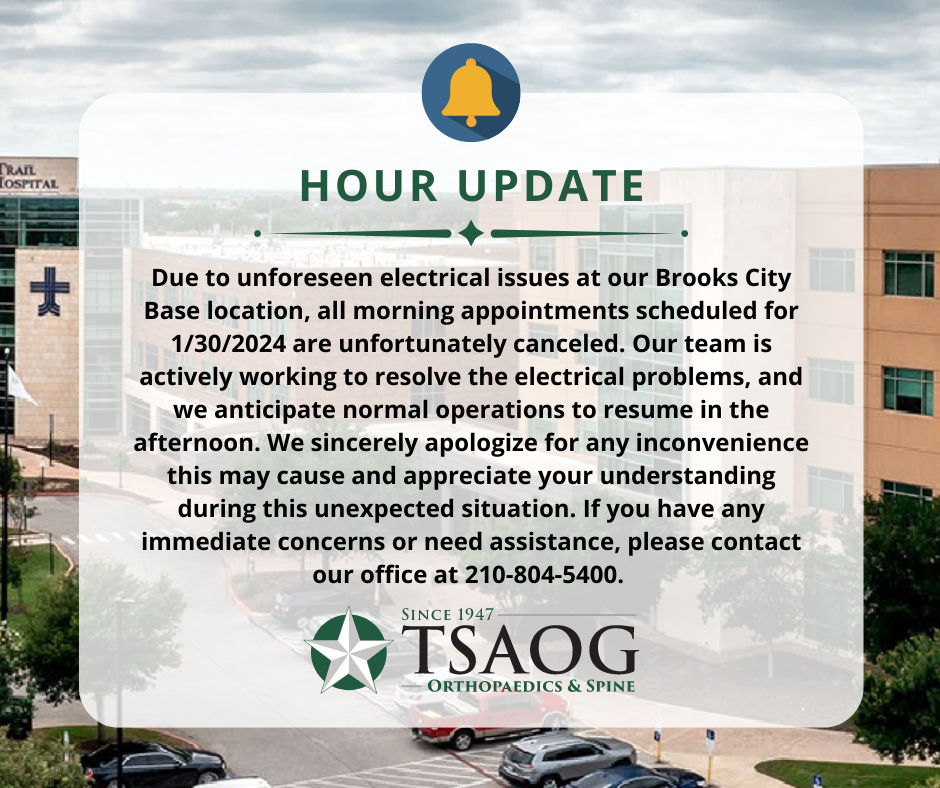Knee
Replacement Center
Home » Services » Joint Replacement » Knee Replacement
When To Consider Knee Replacement
- You have knee pain that keeps you awake at night or wakes you up.
- You have knee pain that limits your daily activities, like walking or climbing stairs.
- You have knee pain that causes you difficulty getting in and out of chairs.
- You have noticed a decrease in the range of motion of your knee(s).
- You have tried conservative treatment options for knee pain with no success.
- The medial compartment – the inner joint where the femur meets the tibia
- The lateral compartment – the outer joint where the femur meets the tibia
- The patellofemoral joint – where the kneecap meets the femur
If only one compartment of your knee is damaged, you may be a good candidate for partial knee replacement (or unicompartmental knee replacement), in which only one compartment of the knee joint surface is removed and replaced. Partial knee replacement is less invasive than total knee replacement and offers the following advantages:
- Faster recovery time
- Less pain following surgery
- Less blood loss
Partial knee replacement can also be significantly less expensive than total knee replacement as, in many cases, it can be performed in an outpatient surgery center, avoiding the expense of a hospital stay.
- Preparation – The damaged cartilage, as well as a small amount of the bone, is removed from the ends of the femur and tibia and the new surfaces are shaped to fit the designated implants.
- Positioning – Metal implants are positioned in place of the removed bone and cartilage to recreate the joint surface. The implants are then cemented in place.
- Patellar Resurfacing – The damaged underside of the kneecap is removed and replaced with a plastic implant. This step my be omitted, depending on the individual patient’s case.
- Spacing – A plastic spacer is inserted between the newly resurfaced ends of the femur and tibia, creating a smooth surface for gliding (acting in place of cartilage for the artificial knee).
Gender-specific knee replacement refers to implants crafted specifically to accommodate the female knee. For years, the same knee replacement implants were used for men and women. However, in the early 2000s, knee replacement implants were developed specifically for the female knee to take into account the facts that:
- Women tend to have smaller, narrower knees than men.
- Women have more of an angle between their hip and knee than men.
- Women’s kneecaps are positioned slightly differently than men’s.
- The prominence on the front of the femur is less pronounced in women than in men.
Choosing the correct knee replacement implant for your specific case ensures that your implant will fit better, function better, and last longer.
- Most patients will stay 3-4 days in the hospital and then begin physical therapy (either with a physical therapist coming to their home or in outpatient physical therapy sessions). Some patients will return to routine activities such as driving within 2-3 weeks.
- After recovering from knee replacement, you can expect to live a normal lifestyle, including activities like walking, hiking, biking, hunting, and fishing. According to the American Academy of Orthopaedic Surgeons (AAOS), more than 90% of total knee replacement patients experience a significant reduction in pain as well as a vastly increased ability to perform daily activities.
- Low impact activities are the key to the long-term success of your knee implant, so you will want to avoid high impact activities like running, which would put increased stress on the metal and plastic implants. Your goal after knee replacement should be to live a “knee-friendly” low-impact lifestyle and keep the muscles surrounding the joint strong to maximize the effectiveness and longevity of your artificial knee.
The bottom line is that knee replacement surgery is a last resort for dealing with knee pain due to arthritis. However, if you have tried conservative treatment options with no success and persistent arthritic knee pain is interfering with your life and limiting your activities, it is time to talk with your doctor about a knee replacement.
Your Knee Replacement Team
Book an Appointment
FIND A LOCATION

Mission Trail Medical Plaza
3327 Research Plaza, #215
San Antonio, TX 78235
PHYSICIANS: Christian A. Woodbury, M.D. , Shane C. Eizember, M.D. , Kevin L. Kirk, D.O., F.A.O.A. , S. Josh Bell, M.D. , Harrison Scofield, M.D. , Sergio Viroslav, M.D. , Alexis Maiella, D.O. , Emmanuel C. Nwelue, Jr., M.D. , Matthew T. Glazier, D.O. , Charles E. Bryant, M.D. , Anthony Montanez, M.D.

Christus Santa Rosa NW, Tower I
2829 Babcock Rd., #700
San Antonio, TX 78229

Ridgewood Orthopaedic Center
19138 US-281 N
San Antonio, TX 78258
PHYSICIANS: Alexander S. Rowland, M.D. , Dustin B. Rinehart, M.D. , G. Lane Naugher, M.D. , Stephen C. Drukker, M.D. , Casey D. Taber, M.D. , Bryan W. Kaiser, M.D. , Linzy Fitzsimons, M.D. , David R. Espinoza, M.D. , Ephraim K. Brenman, D.O., R.M.S.K. , Eloy Ochoa, Jr., M.D. , M. Brandon Dobson, M.D. , Robert U. Hartzler, M.D., M.S. , Justin Robbins, M.D. , David T. Hughes, D.P.M. , Scott R. Seidel, D.C. , Matthew T. Glazier, D.O. , Alexis Maiella, D.O. , Randall C. Marx, M.D. , B. Christian Balldin, M.D. , Lauren E. Karbach, M.D. , Richard L. Ursone, M.D. , Jessica F. Rutstein, D.P.M. , Matthew C. Swann, M.D. , Patrick Ahern, M.D. , Jonathan S. Duncan, M.D. , Cory J. Moczygemba, DPM , Richard Nauert, M.D. , Joseph Poku, M.D. , Sergio Viroslav, M.D. , David E. Vizurraga, M.D.

Westover Hills Medical Plaza I
11212 State Hwy 151, #150
San Antonio, TX 78251

Grayson Heights
1422 East Grayson Street, Ste 102
San Antonio, TX 78208
PHYSICIANS: Mickey S. Cho, M.D. , S. Josh Bell, M.D. , Alexis Maiella, D.O.

The Orthopaedic Institute
400 Concord Plaza Dr.
San Antonio, TX 78216
PHYSICIANS: Alexander S. Rowland, M.D. , David E. Vizurraga, M.D. , Justin Robbins, M.D. , Casey D. Taber, M.D. , Charles E. Bryant, M.D. , Randall C. Marx, M.D. , Shane C. Eizember, M.D. , Christian A. Woodbury, M.D. , Stephen T. Gates, M.D. , G. Lane Naugher, M.D. , B. Christian Balldin, M.D. , Ephraim K. Brenman, D.O., R.M.S.K. , Christopher J. Tucker, M.D. , Eloy Ochoa, Jr., M.D. , Eduardo Moreno, M.D. , Matthew C. Swann, M.D. , David R. Espinoza, M.D. , Lauren E. Karbach, M.D. , Anthony Montanez, M.D.

Resolute Retail Plaza
601 Creekside Crossing #106
New Braunfels, TX 78130

Schertz Parkway Professional Plaza
5000 Schertz Parkway, #600
Schertz, TX 78154
PHYSICIANS: Charles E. Bryant, M.D. , Mickey S. Cho, M.D. , Nicholas Nira, D.C. , Richard Nauert, M.D. , Lauren E. Karbach, M.D. , Justin Robbins, M.D. , Richard L. Ursone, M.D. , Dustin B. Rinehart, M.D. , Alexis Maiella, D.O. , Jeffrey B. Shroff, M.D. , Jonathan S. Duncan, M.D. , Emmanuel C. Nwelue, Jr., M.D.
Quarry Area
Add an optional description to your map pin
Ridgewood Orthopaedic Center
Schertz
Medical Center
Westover Hills
WorkSmart at Grayson Heights
Brooks City Base
New Braunfels









